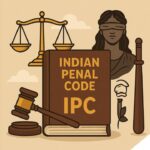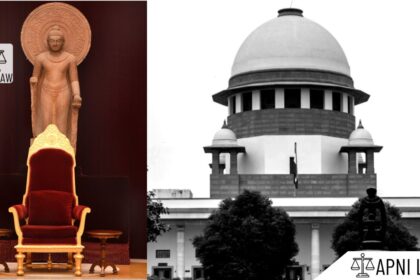Introduction
The Federal Court, established under the Government of India Act 1935, was India’s highest court during British rule. In 1950, the Supreme Court replaced it as the country’s top court. The Indian Constitution is the supreme law, and its provisions are enforced by law. Without enforcement, these provisions would be meaningless. Therefore, the judiciary is independent to interpret the Constitution.
As the highest court, the Supreme Court acts as the guardian of the Constitution and the protector of citizens’ fundamental rights and freedoms. It interprets the Constitution and oversees the entire judicial system in India.
Article 124 of the Indian Constitution establishes the Supreme Court, whose decisions are binding on all lower courts. India’s judiciary is independent, ensuring justice and fairness. This independence helps maintain clarity and uniformity in the legal system.
Structure And Composition Of The Indian Judiciary
Organisation :The Indian judiciary operates in a hierarchical system. At the top is the Supreme Court, followed by the High Courts, District Courts, and finally, the Panchayat courts.
Composition: According to Article 124(1) of the Indian Constitution, the Supreme Court comprises the Chief Justice of India and 33 other judges.
Appointment: Article 124(2) outlines the procedure for appointing Supreme Court judges. The President appoints judges based on recommendations from the current Supreme Court and High Court judges.
Terms Of Office And Removal Of Supreme Court Judges
Under Article 124(2A) of the Indian Constitution, Parliament has the authority to set age requirements for Supreme Court judges. As per Article 124(2), a Supreme Court judge can serve until the age of 65.
Ways A Judge May Leave Office
- Resignation: A judge can resign by submitting a letter to the President.
- Removal: A judge can be removed from office according to the procedure outlined in Clause 4.
- Death: A judge’s term ends upon their death.
Qualifications For Supreme Court Judges
Article 124(3) of the Indian Constitution sets the following criteria for someone to become a Supreme Court judge:
- Must be a citizen of India.
- Must be an eminent jurist.
- Must have served as a judge of a High Court for at least five years.
- Must have been an advocate in a High Court for at least ten years, or in two or more such courts.
Procedure Of Impeachment
A Supreme Court judge can be removed from office through the following process:
- A motion must be signed by at least 50 members of the Rajya Sabha and 100 members of the Lok Sabha.
- An inquiry committee, consisting of a Supreme Court judge, a Chief Justice of a High Court, and an eminent jurist, investigates the charges.
- If the committee finds the charges valid, the motion is presented to both houses of Parliament.
- The motion must be passed by a two-thirds majority in both houses.
- The judge has the right to defend themselves and prove their innocence.
- If the President is satisfied with the motion, they may issue an order to remove the judge.
The Judges (Inquiry) Act, 1968, outlines the detailed procedure for such investigations.
Salary, Allowances, And Other Amenities For Supreme Court Judges
Article 125 of the Indian Constitution outlines the salary, allowances, and other benefits for Supreme Court judges. These are determined by Parliament and cannot be altered to the judges’ disadvantage.
Judges also receive other privileges, such as free housing and a pension upon retirement. After retiring, a judge cannot hold any profit-based office under either the state or union government, nor can they practise in court or serve under any other legal authority.
Jurisdiction And Powers Of The Supreme Court
The Supreme Court of India is the highest judicial authority in the country. According to Article 141, its decisions are binding on all other courts. The Supreme Court regulates the judicial system to maintain public order and protect against external threats.
Article 129 of the Indian Constitution designates the Supreme Court of India as a court of record, meaning its proceedings, decisions, and acts are preserved as evidence and cannot be questioned in any other court. As a court of record, the Supreme Court holds the power to determine its own jurisdiction and to punish for contempt of court.
Role Of The Supreme Court Of India
As the supreme judicial authority, the Supreme Court of India protects the Constitution and elucidates its provisions with final authority. The Court holds the power to interpret the Indian Constitution and acts as the custodian of fundamental rights. Under Article 32, any citizen can approach the Court for legal remedies if their fundamental rights are infringed.
The Supreme Court has the power of judicial review to declare any law passed by Parliament or state legislatures void if it contravenes the Constitution or exceeds the given jurisdiction. Additionally, under Article 137, the Supreme Court can review its own judgments if new evidence emerges, if relevant facts come to light, or if sufficient reasons justify a review, ensuring that its decisions can be reconsidered for the public good.
Powers To Make Rules And Appoint Officers
The Supreme Court has the authority to establish rules for its practice and procedures. It also has the power to appoint its officers and servants, including the Chief Justice of India and other judges, provided they meet the necessary qualifications.
Power To Punish For Contempt
Under Article 129, the Supreme Court can punish individuals found guilty of contempt of court. Contempt includes actions that obstruct court proceedings, disregard court orders, or defy its authority, leading to disrespect for the Court. Penalties for contempt can be civil or criminal, depending on the severity of the offence.
Appeals Under The People’s Representation Act 1951
The Supreme Court hears appeals filed under The People’s Representation Act 1951.
Additional Powers And Case Transfers
Article 140 allows Parliament to grant the Supreme Court additional powers not explicitly mentioned in the Constitution if deemed necessary for its effective functioning.
Power To Transfer Cases
Under Article 139A, the Supreme Court can transfer cases between itself and the High Courts. If both courts have cases involving the same or similar legal questions, the Supreme Court can withdraw cases from the High Court or transfer cases to uphold justice.
Rule-Making Power Under Article 145
Under Article 145, the Supreme Court has the authority to make rules with the President’s approval. These rules can cover various matters, including the regulation of persons practising before the court, the procedure for appeals, proceedings for the enforcement of fundamental rights, and the transfer of cases. Additionally, the rules may address appeals on High Court judgments that have reversed an acquittal and imposed a death sentence.
Specific Procedural Rules
The Supreme Court’s rule-making power also extends to determining the costs of proceedings, bail, stay of proceedings, summary determinations of frivolous appeals, and inquiries into the suspension of a Public Service Commission member.
Appointment Of Ad Hoc Judges And Seat Of The Supreme Court
Under Article 127, if the Supreme Court lacks a quorum for its sessions, the Chief Justice of India can appoint a High Court Judge as an ad hoc judge with the consent of the President and after consulting the Chief Justice of the relevant High Court.
According to Article 130, the Supreme Court’s seat is in Delhi, but the Chief Justice of India, with the President’s consent, can designate another location for the Court.
Article 142 grants the Supreme Court the authority to issue decrees or orders for pending matters and enforce them. It can also issue orders for the attendance of individuals or the production of documents. Additionally, Article 144 mandates that all civil and judicial authorities in India must assist the Supreme Court.
Appointments And Funding
Article 146 outlines that the Chief Justice of India, or a judge or officer designated by them, is responsible for appointing Supreme Court officers. The administrative expenses, including salaries and pensions, are funded from the Consolidated Fund of India.
The Power And Scope Of Judicial Review In India
Despite the absence of explicit mention in the Indian Constitution, the apex judicial authority holds the power of judicial review, as affirmed in Article 32 and 226. Both the Supreme Court and High Courts are empowered to conduct judicial reviews concerning legislative, administrative, and quasi-judicial actions.
India’s democratic structure upholds a separation of powers among the legislative, executive, and judicial branches, each operating independently. However, to prevent potential arbitrariness, a system of checks and balances is vital. The judiciary’s power of judicial review ensures that legislative and administrative actions conform to constitutional provisions and do not overstep boundaries. This oversight has expanded to encompass socio-economic justice, but judicial restraint is crucial to maintain a balance.
Under Article 32, individuals can seek legal recourse if their fundamental rights are violated. Judicial review, a fundamental tenet of the Indian Constitution, cannot be restricted by amendments. However, its scope remains limited, primarily addressing unconstitutional actions, fundamental rights infringements, and administrative and legislative overreach.
Quasi-judicial functions are distinct from both judicial and administrative functions. They involve exercising jurisdiction sanctioned by law to determine an individual’s basic rights and freedoms. Tribunals or authorities established by law and given decision-making powers in specific matters are subject to judicial review.
Judicial review of administrative actions is limited to three grounds:
- Unreasonableness or irrationality
- Unlawfulness or illegality
- Proportionality and procedural impropriety
Judicial review assesses whether a decision-making process is flawed due to irrationality, ignores crucial factors, or breaches the due procedure of law. It examines the relevance of factors to ensure decisions are within the scope of reasonable authority.
Conclusion
The Supreme Court stands as India’s highest judicial authority, possessing extensive jurisdiction, formidable powers, and functions crucial for public welfare. It safeguards individual fundamental rights, interprets the constitution’s provisions, ensures socio-economic justice, and establishes laws that hold authority over all other courts without question.







